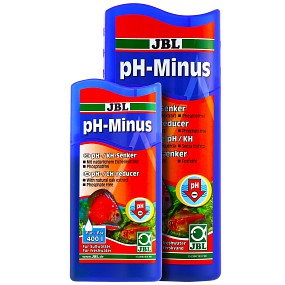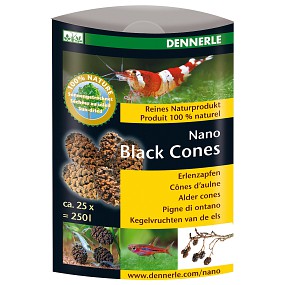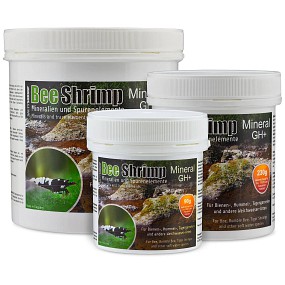Many ornamental fish, shrimp and aquatic plants prefer soft and acidic waters with a pH below 7 and low carbonate- and total hardness. Often our tap water does not meet these conditions and is more likely to be classified as medium hard to hard. Likewise, the pH is usually in the alkaline range above 7. There are several ways to soften and lower the pH to provide the plants and animal inhabitants of your aquarium with soft, acidic water. We’d like to make you familiar with a few of them:
CO2-feed

In aquariums with a focus on aquatic plants the use of a CO2-system is compulsory, to ensure the supply of your plants with carbon.
A side-effect of feeding CO2 (carbon dioxide) is a lowering of the PH-value. A small percentage (less than one) of the CO2 dissolved in the aquarium water reacts into carbon dioxide. This acid reduces the pH-value. Both, CO2 saturation and carbonate hardness (KH) of the aquarium water determine to which exact value the pH will drop.
However, as described above, the pH reduction in this case is only a side effect and shouldn’t be the way to go. The focus here is clearly on the supply of water plants with carbon. The CO2 target values are at 20 to 30 mg/l and should be monitored with a drop checker. Lowering the pH by introducing considerably more CO2 is definitely not recommended, since many animals can’t handle higher CO2 concentrations. Instead, one should rather rely on other measures that we also present here.
Soil substrate

Soil is an active substrate, very popular in the set-up of plant aquariums, but also favoured for breeding tanks for soft water shrimp. Due to their cation exchange ability, they remove hardeners from the water, reduce carbonate hardness and lower the pH value. Many Soils even out the water to a pH of about 6.5, which is ideal for most soft water loving fish and shrimp. The effect of the soil diminishes after time (also dependent on the hardness of the water used initially), and should then be replaced.
Use of water conditioners

By means of water conditioning agents, the pH can be lowered in a very simple way. Here are some examples:
The product pH-Minus manufactured by JBL is based on natural acids. Before application, the carbonate hardness (KH) needs to be determined to calculate the amount to be added.
Seachem Discus Buffer is a pH-lowering buffer based on phosphate. In addition, the water is softened by precipitation of calcium and magnesium.
Natural products

Natural products like peat or alder cones can lower the pH, though not very efficiently. In addition, by their application, the water turns a slight brown color. This may be desirable, for example, if you want to create a blackwater biotope. If the discoloration is unwanted, we recommend the use of Seachem Purigen, which removes this and takes care of crystal-clear water.
Demineralised water

Especially when having to deal with very hard tap water it’s a good idea to cut it with soft rain- or demineralized water. This will provide a lower carbonate- and total hardness. Completely mineral-free water is made by the use of a reverse osmosis system or demineralizer. Many breeders swear on the exclusive use of demineralized water withou cutting it with tap water. By conditioning it with special hardening salts the water is brought to optimal values, and you are independent of tap water and thus the possible, temporary fluctuations in the water supplier’s water chemistry.
The use of demineralized water and hardening salts has no direct effect on the pH value, though. But the lower carbonate hardness achieved by the use of these products makes it easier to lower the pH.